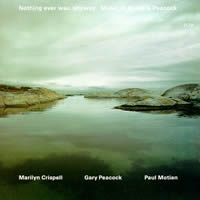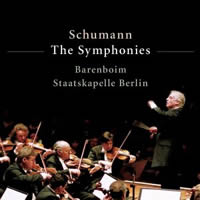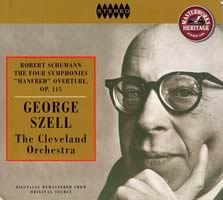Random Noise 7: To Be Listenin’ or Not to Be Listenin’
|
[With our usual thanks to OnSoundandMusic.com for permission to post these Random Noise columns in La Folia. M.S.] Mike Silverton [March 2004.]
I’m holding a CD (I type with my toes) I recommend to the callow as a glimpse of What Was and, to those as long in the tooth as I, a souvenir of the Great Foolishness. The Electronic Music Foundation, Inc. (http://www.emfmedia.org/) has issued a freshly minted HPSCHD (EMF 038). Ring a bell? Remember a certain Nonesuch LP? Does it help if I toss in the names John Cage and Lejaren Hiller? The year is 1969, the litter psychedelic, hippies and happenings everywhere, Flower-Power simulacra, the Western World’s revolting youth enlivening urbs and edu-sites . One thing good to be said for the time: Getting laid was easy, and better still, largely without life-threatening consequence. The human immunodeficiency virus had yet to wield its minuscule scythe, and we were, all of us, a whole lot better-looking. Than we are now, I mean — those of us who’ve managed to live. Anyway, my dears, in keeping with its in-your-face time, HPSCHD is unlistenable. To play it through at an appropriate volume setting (loud!) would damage your sensibilities and quite possibly your health. Let me describe this thing, beginning with the visuals. In addition to the disc, we find inside the period-garish slipcase 15 loose 5-1/2-inch-square cards, one side text, the other, aspects of posters relating to the work’s premiere: a labor of love in a limited edition, and when it sells out, or more likely if, EMF Media will reissue HPSCHD conventionally packaged. Bad idea. The release’s appeal — maybe its only appeal — is its period allure. I guess it won’t hurt anyone to quote what HPSCHD is about: a work for “20-minute solos for one to seven amplified harpsichords and tapes for one to 52 amplified monaural machines to be used in whole or in part in any combination with or without interruption, etc., to make an indeterminate concert of any agreed-upon length having 2 to 59 channels with loudspeakers around the audience . “ The premiere, which took place on May 16, 1969, in the Assembly Hall of the University of Illinois at Urbana / Champaign, was a huge multimedia production, with 208 tapes 52 tape-players 59 amplifiers and loudspeakers, 6,400 slides (5,000 from NASA), 64 slide projectors, 40 films (including Méliès’ Trip to the Moon), 8 motion-picture projectors, 11 100×40-foot rectangular silk-screens a 340-foot-in-circumference circular screen [and] smocks with fluorescent astrological designs that would show only with the black light.” These quotes are from the excellent notes. EMF’s Spartan two-channel version features Robert Conant, harpsichord, in Joel Chadabe’s realization. It exhausts me even to think about it. This is one of those releases I’d have regretted not receiving, will never part with, and, except to speed the lingering guest, will never play again.
I am nothing if not thoughtful, and you deserve a break. Here, for your after-dinner listening pleasure — a delightful something to get guests to remain — is as different a release as it’s possible to achieve in this less than symmetrical corner of the universe. It’s a two-disc set entitled Nothing ever was, anyway / Music of Annette Peacock (ECM 1626/27), Marilyn Crispell, piano; Gary Peacock, double-bass; Paul Motian, drums, with Annette Peacock’s voice in one of the numbers, “Dreams (If time weren’t).” If you’re thinking to yourself, Wow, sounds great — where have I been?, it was issued in 1997. Manfred Eicher’s ECM is one of those feisty independents that maintains its large catalog in permanent availability, and bless his thoughtful heart for that. I’d not have wanted to miss this one, and neither should you. On the face of it, the draw is the elegant and mercurial jazz pianist Marilyn Crispell. With Crispell, you never quite know what to expect. Here, it’s serenity in blue and sepia tints as befits Annette Peacock’s bittersweet originals. Nothing ever was, anyway sounds, as a trio, as introspective and moody as its title suggests, with the emphasis on trio. While Crispell’s piano occupies stage-front, Peacock’s bass and Motian’s lightly employed percussion weave their own, thoroughly integrated and ingratiating spells. There are no hot dogs in this feast. Crispell, who’s proven herself time and again a dazzling soloist, here performs as a brilliant ensemble player, which is in no way to suggest that she disappears into the tapestry. My problem with jazz is cliché. It is, for all its bold virtuosity, too much bound by convention. When a jazz trio occupies familiar terrain and yet succeeds in sounding fresh and convincing, and most particularly, oddly unique, you know you’re listening to something special. If this were the only work of Crispell’s I’d ever heard, she’d still be at the top of my list. How 13 numbers can sound so understated and at the same time so filled to bursting with juice is this set’s great and delightful mystery. “Blood,” the most intense of these numbers, has Crispell plucking at heart-strings against Motian’s rich percussive wash. Engineered by Jan Erik Kongshaug in September 1996, at the Right Track Recording Studios, New York. An ideal production: intimate yet airy. As warmly recommended as anything I’ve covered here.
My wife Lee called a New York Times article to my attention. (She gets it online. We buy the Sunday edition at the Fertile Mind, a bookshop in our little coastal town. Bruce, who could pass for Santa Claus and is maybe twice as affable, has a stack on reserve.) Seems that Robert Schumann’s experiencing a revival. Perhaps this ripple of interest explains the appearance on the Teldec label (2564 61179-2) of Schumann’s four symphonies performed by the Staatskapelle Berlin, Daniel Barenboim conducting. The orchestra, having long languished on the Red side of the Wall (since reduced to keepsakes and exhibits) and with roots reaching into the 16th century, manages to sound just old-fashioned enough to resonate comfortably with Schumann’s take on large-ensemble writing, which has been described by the less-than-smitten as turgid. I’ve never thought so, and Barenboim’s band assists in this view. Turgid is as turgid does. The symphonies’ characteristically thick textures, once peered into, yield rewards these well-produced sessions help us to hear. Schumann, the consummate Romantic, modeled for the movement’s ideal by going mad, as did the poet Friedrich Hölderlin, securing for both a place in the affections of uncompromising moderns who, in their cultural isolation, see themselves in similar straits. I’m thinking, for example, of the German composer Wolfgang Rihm’s indebtedness to Schumann, who is also remembered for his having promoted the music of the young Johannes Brahms. A good musicologist could create a veritable spider’s time-web of productive interconnections.
My favorite Schumann symphony set remains George Szell’s with the Cleveland Orchestra, recorded in ’58 and ’60 for Epic Stereorama and appearing on CD in 1996 as one of Sony Classical’s period-packaged Masterworks Heritage Stereo Era reissues, MH2K62349. Szell, a taskmaster and disciplinarian, fairly sculpted musical phrases, infusing the sonic architecture with the kind of glorious tension you just don’t get to hear all that often. Sometimes dictatorships work. If you can locate this set, go for it. Meanwhile, Barenboim’s rather more upholstered collaboration with this interesting band will do nicely.
[More Mike Silverton, Random Noise]
[Previous Article:
Balkan Snapshots]
[Next Article:
Pump and Circumstance]
|



